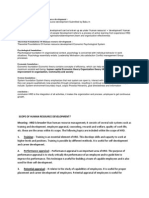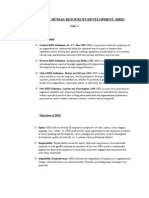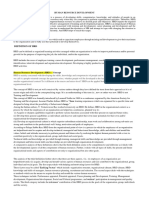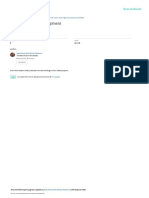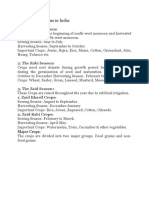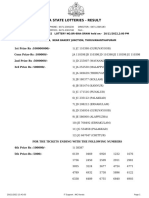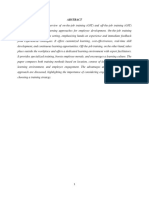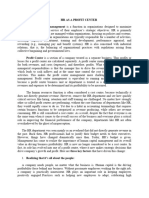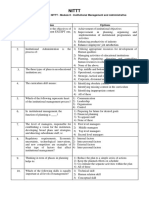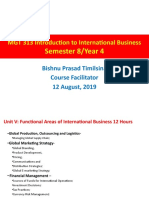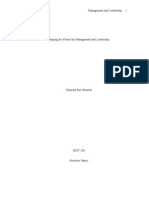0% found this document useful (0 votes)
68 views3 pagesHRD Notes
Human Resource Development (HRD) focuses on enhancing the skills, knowledge, and abilities of employees to meet current and future organizational needs. Key components of HRD include performance and potential appraisal, career planning, training, employee welfare, and creating a positive work environment. The ultimate goals of HRD are to boost productivity, promote career growth, and align individual objectives with organizational goals.
Uploaded by
kalaiselvan VelusamyCopyright
© © All Rights Reserved
We take content rights seriously. If you suspect this is your content, claim it here.
Available Formats
Download as DOCX, PDF, TXT or read online on Scribd
0% found this document useful (0 votes)
68 views3 pagesHRD Notes
Human Resource Development (HRD) focuses on enhancing the skills, knowledge, and abilities of employees to meet current and future organizational needs. Key components of HRD include performance and potential appraisal, career planning, training, employee welfare, and creating a positive work environment. The ultimate goals of HRD are to boost productivity, promote career growth, and align individual objectives with organizational goals.
Uploaded by
kalaiselvan VelusamyCopyright
© © All Rights Reserved
We take content rights seriously. If you suspect this is your content, claim it here.
Available Formats
Download as DOCX, PDF, TXT or read online on Scribd
/ 3




